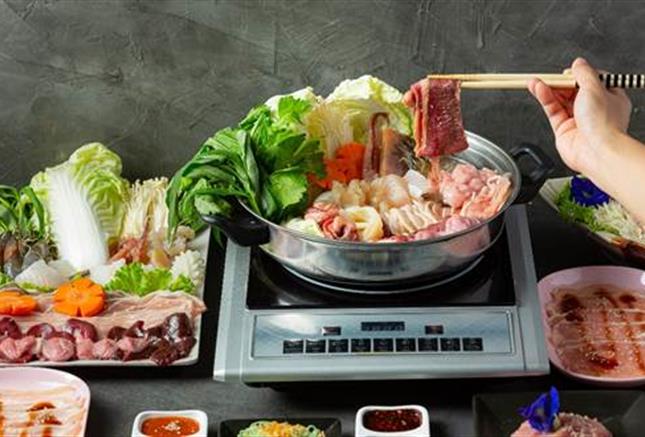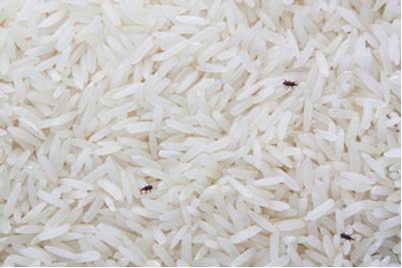Introduction
Hotpots are a popular food choice all year round at social events and gatherings. As its name suggests, hotpot involves a boiling pot of soup, with a heat source applied to it. Ingredients such as meat, vegetables, mushrooms, and processed foods are cooked inside the pot, and eaten with a variety of dipping sauces.
This article provides more information on hotpot and their possible food safety risks, and how you can enjoy them safely.
What are the food safety risks associated with hotpot?
Since hotpot involves everyone at the table cooking their own food, there is a risk of consuming undercooked food, especially if an individual has limited experience in cooking. Undercooked food may contain harmful bacteria and viruses (pathogens) that are not killed by cooking and can subsequently cause food poisoning.
In addition, raw and cooked ingredients are often placed side by side for convenience. This increases the risk of cross contamination, where bacteria from the raw ingredients contaminates the cooked food.
The following are examples of common pathogens that may be present in undercooked/raw food:
1. Salmonella
Salmonella is a type of bacteria found in the intestines and faecal matter of humans and animals. Food-borne infection can occur when people eat raw or undercooked meat, poultry and eggs which come into contact with faecal matter through improper hand hygiene (i.e. not washing hands after using the toilet). Thorough cooking of raw ingredients can reduce the risk of salmonella infection.
Salmonella can cause gastroenteritis and symptoms include diarrhoea, abdominal pain, fever, nausea and vomiting. More information on Salmonella can be found here.
2. Listeria
Listeria is another type of bacteria commonly found in the environment. As the bacteria can survive in harsh conditions, Listeria can be found in refrigerated or processed food. Like Salmonella, Listeria can be killed by cooking.
Listeria contamination can cause symptoms such as fever, muscle aches, nausea and diarrhoea, much like most food-borne infections. More information on Listeria can be found here.
3. Hepatitis E virus (HEV)
HEV is a virus that causes inflammation of the liver, or Hepatitis E. Such infections can occur when people ingest food/water contaminated with the stools of infected patients. In developed countries with good sanitation and water supply, Hepatitis E infections are typically linked to the consumption of undercooked meat and organs of infected animals.
Hepatitis E infection can include symptoms such as jaundice, dark urine, vomiting and abdominal pain, or even limited or no symptoms. More severe symptoms can occur in pregnant women and those with weak immune systems.
4. Campylobacter
Campylobacter is predominantly found in the intestines of chickens and other animals, and is transferred to the meat when an infected animal is slaughtered. Campylobacter can also be killed by thorough cooking.
Symptoms of Campylobacter infection include diarrhoea, cramping, abdominal pain, and fever. In severe cases, the bacteria can lead to conditions such as reactive arthritis and Guillain-Barré syndrome (a form of paralysis), especially in those with compromised immune systems.
How can we reduce the risks of food poisoning when eating hotpot?
While food-borne pathogens are killed by thorough cooking, it is also crucial to avoid contaminating cooked food with dirty utensils or contact with raw ingredients. Engaging in proper hygiene practices, including hand hygiene, when handling food is important in preventing the spread of these pathogens.
Additionally, here are some other food safety and hygiene tips for eating hotpot at home or outside:
Frozen ingredients should be left to thaw in a refrigerator or a microwave, and not at room temperature. If immediately consumed, sealed packages of frozen food can be defrosted in room temperature water which is changed frequently.
Wash hands with soap prior to handling foods or eating.
Check for expiry dates on pre-packaged foods or soup bases and do not use them if expired.
Ensure the broth is boiling before adding in ingredients. Do not drink the broth or remove cooked ingredients for consumption when raw ingredients have just been added to the broth.
Avoid putting too many ingredients into the hotpot as it would cause uneven heat distribution.
Slice fish and meat into thin pieces to allow for fast and thorough cooking.
Use separate sets of chopsticks and utensils to handle raw and cooked ingredients.
Buy hotpot ingredients and soup bases from, and dine at SFA-licensed food establishments.
Is there anything else I should take note of when eating hotpot?
Other public hygiene practices associated with eating hotpot
Sharing eating utensils or food
Sharing of eating utensils and food, including dipping sauces, with others during hotpot may facilitate the spread of bacteria and germs, through droplets of saliva present on them. In view of the current COVID-19 situation, consumers are encouraged not to share eating utensils and/or food.
The use of serving spoons is a recommended practice and a hygienic habit. Hence, consumers should use serving spoons when dishing out soup and ingredients from the hotpot.




